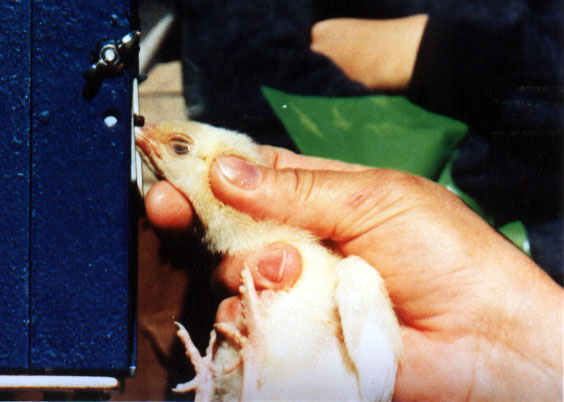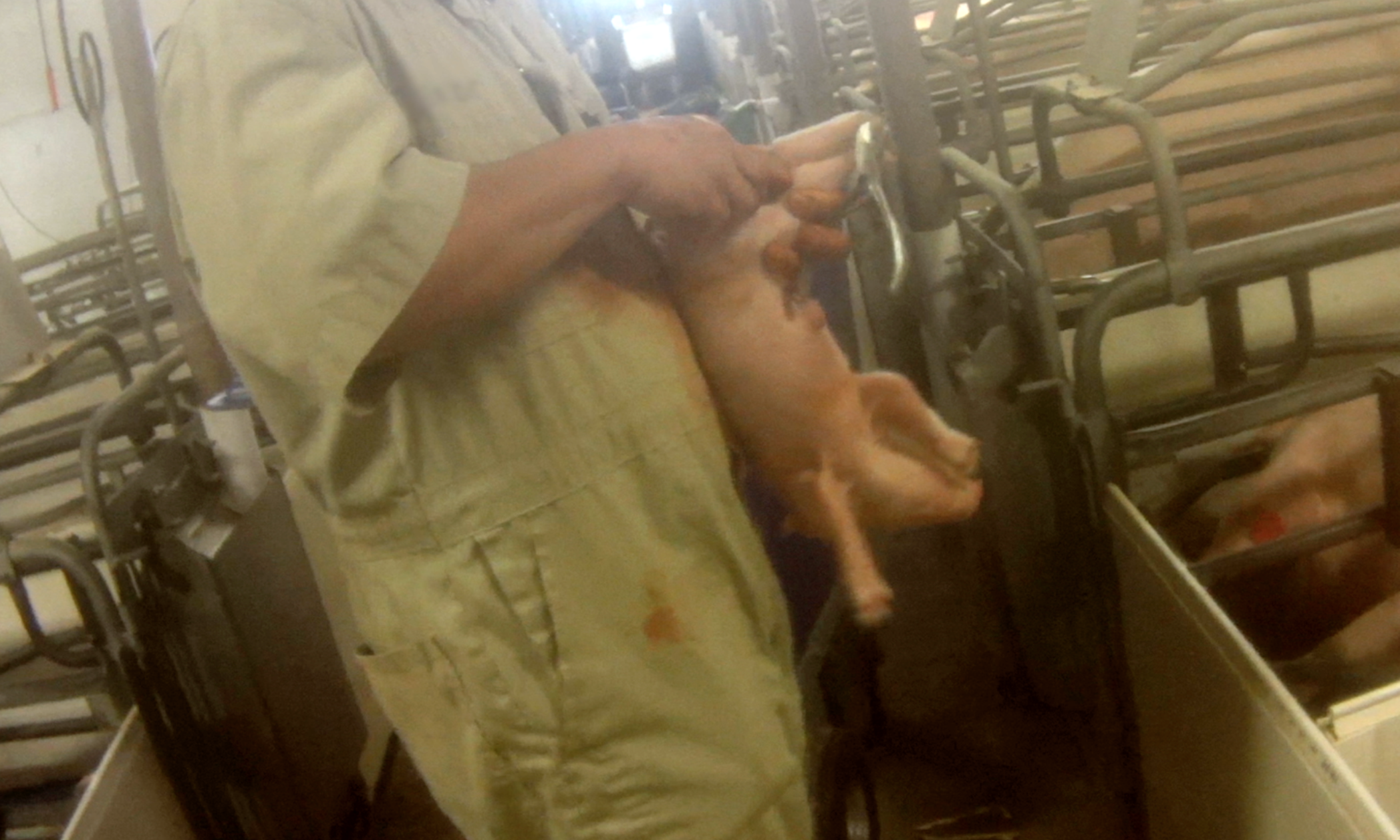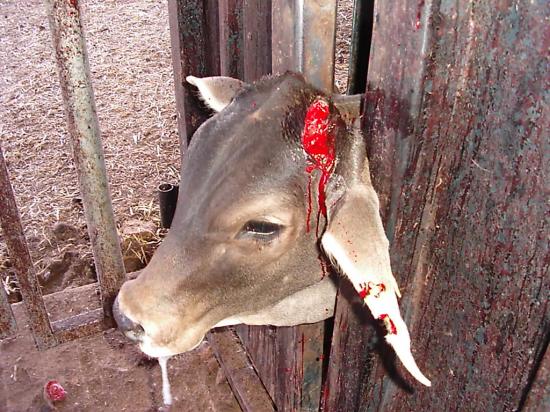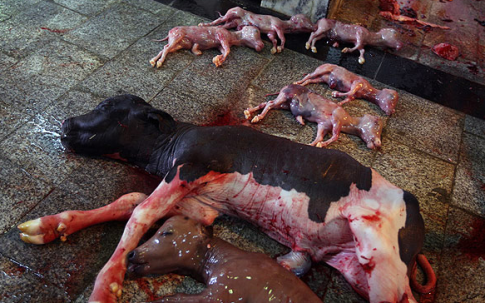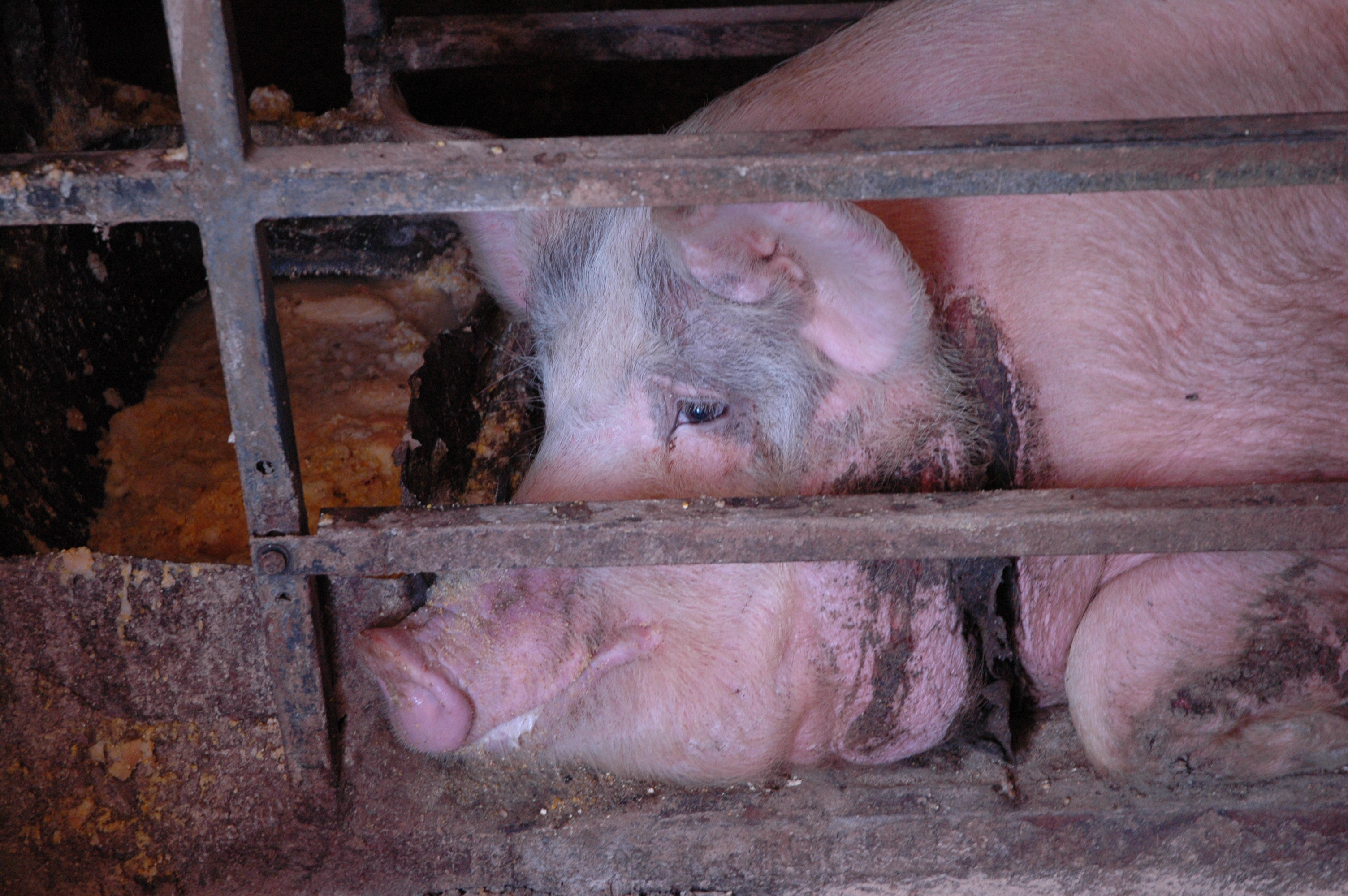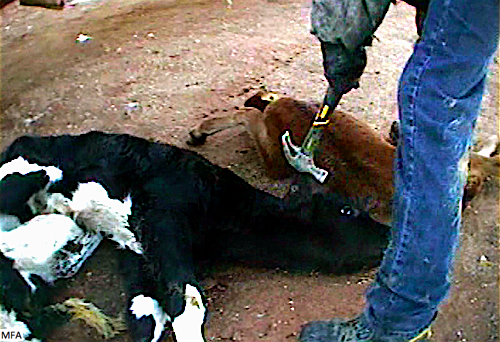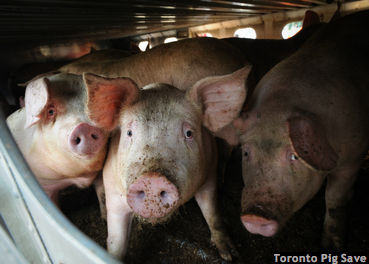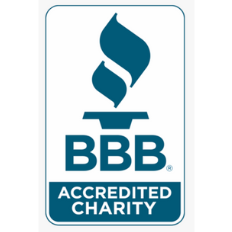LCA Blog
Legalized Cruelty: 10 Shocking Practices Directly from Animal Agriculture Policy
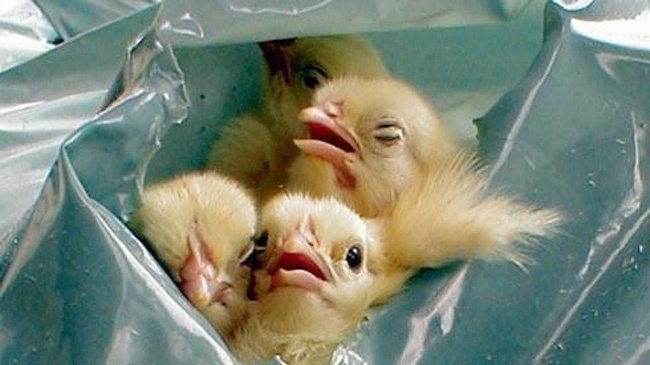 LCA investigations have repeatedly revealed the living nightmare endured by animals raised for food. The most shocking aspect of LCA’s investigations is the fact that much of the documented cruelty is legal. While producers of meat, eggs, and dairy go to great lengths to conceal and justify the horrors that farmed animals are subjected to, the harrowing reality of the animal agriculture industry is clearly depicted in the industry’s own manuals and journals. Unbelievably, farmers are legally subjecting animals to brutal torture and deplorable conditions. Read on to find ten of the most shocking legal practices inflicted upon farmed animals.
LCA investigations have repeatedly revealed the living nightmare endured by animals raised for food. The most shocking aspect of LCA’s investigations is the fact that much of the documented cruelty is legal. While producers of meat, eggs, and dairy go to great lengths to conceal and justify the horrors that farmed animals are subjected to, the harrowing reality of the animal agriculture industry is clearly depicted in the industry’s own manuals and journals. Unbelievably, farmers are legally subjecting animals to brutal torture and deplorable conditions. Read on to find ten of the most shocking legal practices inflicted upon farmed animals.
THUMPING
When piglets are not growing quickly enough or suffer from a botched castration, they are routinely killed by being repeatedly slammed against a wall or thrown to the ground. The process, dubbed “thumping,” often results in prolonged suffering and an excruciating death.
“The use of manual blunt force trauma [is] difficult to apply in practice…An unconscious convulsing piglet is difficult or impossible to differentiate from a conscious brain-injured piglet struggling in response to pain.” Source
MACERATION
Each year, millions of male chicks are born into the egg industry. Due to their inability to lay eggs or grow fast enough to be raised for meat, they are deemed worthless. Consequently, all male chicks are slaughtered shortly after hatching. One of the most common methods of mass slaughter is maceration—dropping live chicks into a grinding machine.
“Carbon dioxide or high-speed maceration is used to cull hatched chicks.” Source
DEBEAKING
The vast majority of hens are raised in extreme confinement, leading to highly stressed birds who have a tendency to peck at one another. Poor survival rates negatively affect profits, so farmers opt to debeak birds, slicing off part of their sensitive,nerve-filled beaks. Anesthetic is not used. In addition to causing chronic pain, this procedure can greatly impair a hen’s ability to eat.
“Beak trimming is a routine husbandry procedure practiced in the poultry industry… There is a considerable body of…research demonstrating the emergence of several markers of acute and chronic pain as a result of trimming.” Source
CASTRATION
Shortly after birth, male piglets are subjected to castration without anesthetic. This horrific procedure commonly involves holding a piglet upside down, then slicing and manually ripping out his testicles as he screams in agony.
“In swine, castration is usually conducted within the first few days of life…Castration is a painful procedure. Currently, alternatives to this practice are limited. 100% of male piglets are castrated in the United States.” Source
TAIL DOCKING
Legal in most states, cutting off the extremely sensitive tails of cows and pigs is another mutilation routinely performed without anesthetic. Due to most dairy cows being raised in unbelievably filthy conditions, disease is rampant. This barbaric procedure, which is intended to minimize farmers’ risk of contracting illnesses, causes unimaginable pain and distress to cows.
“All methods [of tail-docking] are commonly performed without analgesia or anesthesia, and all likely result in some degree of pain... The practice of tail docking dairy cattle is banned, discouraged or declining in most industrialized countries except the US.” Source
DEHORNING
The majority of cows raised for meat and dairy have their horns sawed or burned off without pain relief in order for farmers to protect themselves from injury. Cows’ horns are connected to major nerves and blood vessels. This procedure can cause excruciating pain, severe wounds, and serious infections.
“All methods of horn removal are painful.” Source
KILLING PREGNANT COWS
Dairy cows are kept perpetually pregnant in order to continually produce milk. This taxing cycle of forced impregnation and relentless milking leads cows to suffer from illness, exhaustion, and reduced milk production. As soon as a cow’s milk production declines, she is no longer profitable and is sent to slaughter, frequently while still pregnant. Investigations have revealed nearly full-term calves struggling inside the body of their mother whose throat had been slit. Other footage has documented newborn calves struggling to survive before dying on slaughterhouse floors.
“If a fetus is showing signs of life upon removal from the uterus, it must be immediately killed with an appropriate blow to the head with a blunt instrument." RSPCA Dairy Welfare Manual
EXTREME CONFINEMENT
All farmed animals are legally allowed to be housed in extreme confinement for the entirety of their lives. From battery cages to gestation crates, appalling living conditions leave animals unable to turn around or spread their wings. These sensitive creatures suffer incredible physical and emotional trauma as a result of such intensive confinement. To put into context just how brutal their living conditions are—hundreds of millions of animals suffer to death every year on farms before even making it to slaughter.
“The breeding sow should be thought of, and treated as, a valuable piece of machinery whose function is to pump out baby pigs like a sausage machine.” National Hog Farmer
TEARING APART FAMILIES
All male calves, kids, and lambs born into the dairy industry (cow, goat, or sheep farms), are worthless to farmers due to their inability to produce milk. As a result, babies are torn from their mothers immediately after birth. This leads to severe distress for mothers and calves alike, who are known to bellow and cry out in a desperate search for one another. At times, these babies are sold for meat, but often they are killed shortly after birth. Bludgeoning young animals with a hammer is a common legal method of slaughter of newborns on dairy farms.
“Following birth, the calf is usually removed from her dam after only a few hours.” Source
ARDUOUS TRANSPORT
Packed tightly onto transport trucks, animals endure multi-day trips to the slaughterhouse, during which they are subject to extreme weather conditions, and deprived of food and water for over 24 hours. Many animals are already dead upon arrival at the slaughterhouse, while surviving animals are terrified as they are forced off of trucks to their death.
“Transport losses in pigs during marketing from the farm to the processing plant are not a new issue in the swine industry.” Source
These standard farming practices would be illegal if committed against a dog or cat, but farmed animals are specifically exempted from the Animal Welfare Act, leaving them vulnerable to legalized torture. Few people have had the opportunity to interact with farmed animals to learn that they are incredibly playful and affectionate creatures who exhibit a love for life that is strikingly similar to the companion animals we care so deeply for.
Clearly, we cannot depend on the government to adequately protect farmed animals from cruelty, but individual consumers have the power to cast a vote against this horrific industry through compassionate diet choices. By choosing dairy-free milk, plant-based meats, and vegan egg substitutes, you can take a stance against these horrifying practices, and save numerous lives in the process.
When you subscribe to the blog, we will send you an e-mail when there are new updates on the site so you wouldn't miss them.



